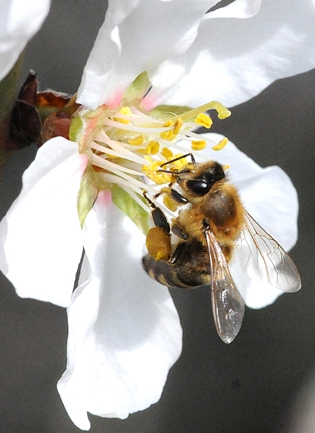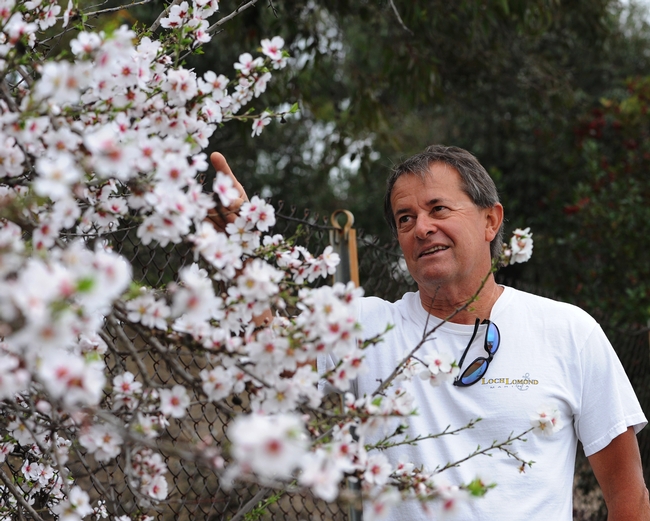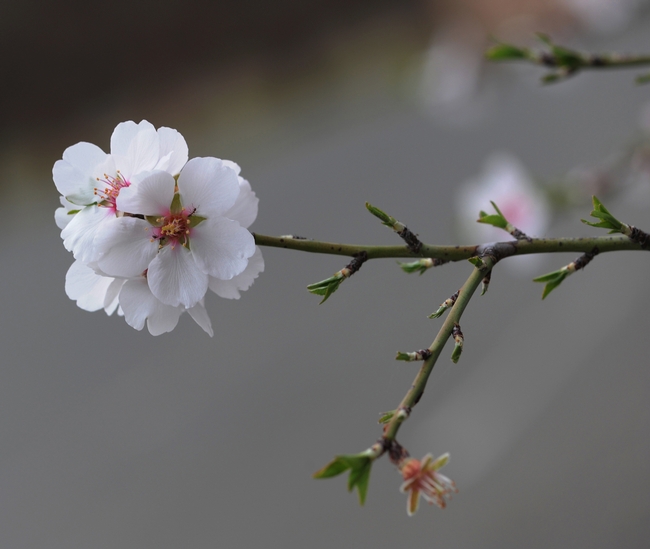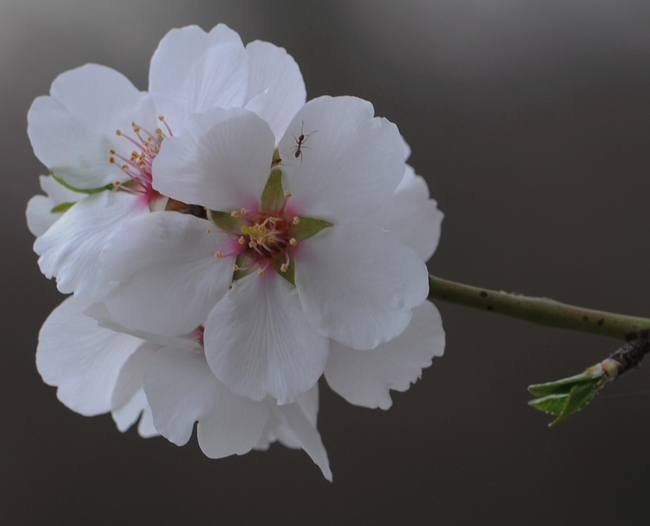
This year, however, thanks to the unseasonably warm weather, almond trees began blooming in late January in some parts of Central California.
Take the city of Benicia. Its temperate climate is conducive to early spring. Today as the temperature climbed to 58 degrees, we saw almond blossoms everywhere--at the entrance to Benicia State Park, in residential yards, in fields and meadows, and lining city streets and roads.
Benicia resident Gordon Hough, who owns and skippers the sports fishing boat, The Morning Star, didn't go fishing for sturgeon and bass today, but he did go jogging in Benicia State Park. On his way home, he stopped to check an almond tree for honey bees.
No bees. But one ant.
It should be a great year for almonds. The USDA's National Agricultural Statistics Service projects a record 2600-pounds-per-acre yield for the 2011-2012 California almond crop. That represents an increase of 200 pounds per acre, or 8 percent, over the previous yield-per-acre record set in 2008-2009, the NASS officials said.
This is what the California Almond Board had to say in its September 2011 newsletter: "The California Almond objective forecast for the 2011–12 crop year is 1.95 billion meat pounds, which is based on 750,000 bearing acres. Overall, shipments were up 13 percent, reaching 1.668 billion pounds and marking the fifth consecutive year of record shipments across domestic and export markets.
"For the second year, California shipped over 1 billion pounds to export destinations, an increase of 15 percent over 2010–11. Domestic shipments were up 9 percent over the previous year, at 490 million pounds. The top five export destinations (China, Spain, Germany, India and the United Arab Emirates) account for approximately 53 percent of total export shipments, while the top 10 destinations account for over 72 percent of export shipments. For the first time, China became the leading export destination, with shipments rising by 26 percent to reach 168 million pounds."
Meanwhile, it takes two hives per acre to pollinate California's 750,000 acres. The bees, trucked here from all over the country, are in holding yards and ready to go.
The orchards will be abuzz soon with millions of bees pollinating the blossoms.
Attached Images:

Benicia resident Gordon Hough stops to check for honey bees at the Benicia State Park. (Photo by Kathy Keatley Garvey)

Delicate almond blossoms exuding "perfume" at Benicia State Park. (Photo by Kathy Keatley Garvey)

An ant crawls on an almond blossom in Benicia. (Photo by Kathy Keatley Garvey)